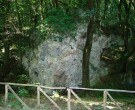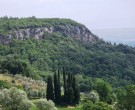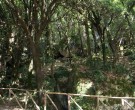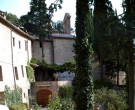> Home > What to visit > Churches and Monasteries

Romitorio di belverde Cetona
CHURCHES AND MONASTERIES
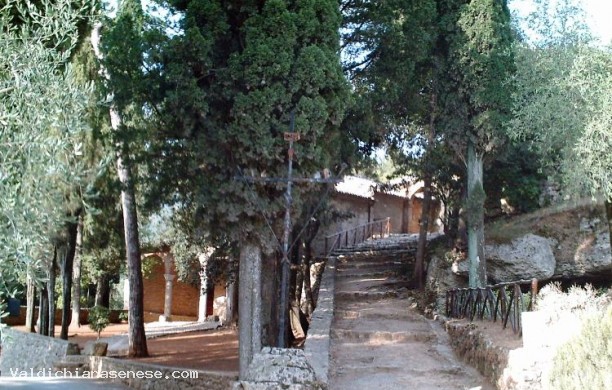
PHONE NUMBERS AND TIMES
Romitorio di belverde
Business card (vCard)
The Hermitage of Belverde stands at the foot of a rocky travertine cliff, surrounded by holm oak trees and cypresses. The most ancient part of the complex is made up of three churches built one on top of the other, probably built around the year 1000. Characterized by only one nave, the churches were perhaps connected to a community of quarrymen and stone cutters that lived nearby. On the bas reliefs of the capitals in the arcade of the lower church are sculpted some of the typical carving tools of this trade: pickaxes, anvils and hammers. In 1367 , due to Henry IV’s voucher, Cetona and many other territories were given to William from Beaufort and, perhaps, in order to save their own local estate, the Montemarte family from Orvieto made donations to the Church of Belverde. One of the family members, named Niccolò, is usually indicated as the founder of the monastery that was built near the Churches during that year. In 1375, the ownership of Cetona and its territory was regained by the Montmarte family thanks t o Ugolino, count of Corbara . A few years later, Francis Montmarte authorized artists of Orvietan tradition to paint the frescoes in the Churches. Such frescoes were executed between the year 1390 and 1391. The lower chapel dedicated to the Holy Virgin Mary, has been almost entirely frescoed by Cola Petruccioli from Petrucciolo, that depicted on the walls several scenes connected to the Virgin, intermingled with other scenes. Moving up to the upper church one can admire a series of frescoes representing the life of Christ. The artists, that worked on these frescoes , were Piero di Puccio, Andrea di Giovanni and the “Fourth Master of Belverde”. The six scenes on the vault of the nearby Chapel of Saint Mary Magdalene, that represent the life of Saint Magdalene, are also attributed to Andrea di Giovanni. On the walls one can also admire a precious Via Crucis, made up of fourteen pieces attributed to the senise tradition and executed in the first half of the year 1700.
(Drawn from: “ Cetona , a journey in time”, by Massimo Cinelli and Franco Cicerchia. On sale at the tourist office)
STAY NEARBY
PODERE SAN GIOVANNI
CETONA
Agri-turism Immersed in the green Tuscan countryside, the San Giovanni holiday farm is l...AGRITURISMO COCCIANO
CETONA
The "Agriturismo Cocciano" is located in a typical tuscan farmholiday dating bac...IL BORGO DEL LUPO
SARTEANO
"Four houses", surrounded by the splendid Mt. Cetona, lies at 756 metres above t...DINING & ENTERTAINMENT NEARBY
Teatro degli Arrischianti
SARTEANO
Il Teatro Comunale degli Arrischianti di Sarteano è all'interno del Palazzo Comuna...Parco delle Piscine
SARTEANO
Situatoa 573 metri di altitudine, in prossimità del centro storico di Sarteano,&nbs...Teatro Mascagni
CHIUSI
A dare i natali al teatro di Chiusi è l'Accademia dei Filateti, fondata nel 1818 e ...



